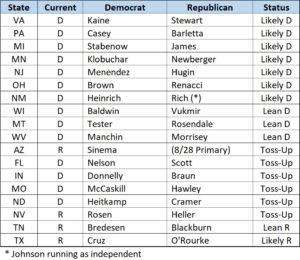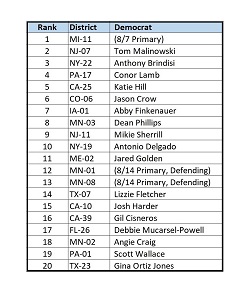“Fun with Flags” is a recurring bit on “The Big Bang Theory” sitcom where Sheldon records a video podcast on the exciting topic of vexillology – the study of flags. I wondered how the gang might weigh in on the various flag stories currently in the news…
Scene: The apartment. Sheldon and Amy are on the couch, facing a video camera. Behind the camera are Leonard and Howard who appear to be to silently playing a computer game. Sheldon’s Mom, Mary, is reading her Bible. Penny and Raj are at the kitchen counter, respectively drinking coffee and a wine cooler.
Sheldon: Hello, I’m Dr. Sheldon Cooper. Welcome to Sheldon Cooper Presents Fun with Flags. Today, we have a very special episode on “Old Glory” – the American flag. I’m joined by Dr. Amy Farrah Fowler who I see is dressed in a football uniform. Amy, may I presume that your sartorial choice is a clever analog for the disrespect shown by NFL players towards the American flag?
Amy: On the contrary, my garb expresses my solidarity with the players and their protests.
Sheldon: Now hold on a minute. We agreed that we weren’t going to get political here.
Amy: You agreed with yourself. I didn’t participate. And, besides, you just called the protests disrespectful. That’s a political opinion.
Sheldon: No. That’s a fact.
Amy: Sheldon, reasonable people can have different opinions.
Sheldon: No, they can’t. I’m sorry. I was raised to respect our flag.
Mary: You tell her, Shelly.
Amy: Leonard, help me out here.
Leonard: How did I get dragged into this?
Sheldon: When did this turn into a town hall?
Amy: Come on, Leonard, if you were an NFL player, wouldn’t you want the right to protest?
Leonard: I’d want the right to get the hell out of there. Those guys are huge! But, okay, if I owned an NFL team, I guess I’d expect my players to stand without protest if they’re on the field during the National Anthem.
Amy: Really? You don’t think freedom of speech means that people can stand, sit, kneel, or knit during the National Anthem if they so choose?
Leonard: Of courses it does. But the team is a business with a valuable brand. I’d tell my players they can protest when they’re not on my clock and not in my uniform. Hey, I wouldn’t allow on-field protests against puppy torture, either.
Raj: <gasp>
Leonard: Well, okay. Maybe for puppies. But in general, if it’s not football, don’t bring it onto the field. My team; my rules. Hey, I like owning a football team!
Amy: I saw a clip of Beto O’Rourke recently – the guy running for Senate against Ted Cruz in Texas. He gave a quite thoughtful and nuanced answer to a question about the NFL issue.
Sheldon: I saw that clip. Thoughtful nuance won’t exactly play well in Texas.
Amy: Nor here, apparently.
Mary: It’s not a crime to be a patriot, Amy. You sound like one of those flag-burning hippies.
Amy: I have a doctorate in neurobiology. Flag burning wasn’t on the curriculum and, in fact, it seems like a rather stupid act to me. But if we made stupidity illegal, we’d have to build a lot more prisons. Several in Texas, perhaps.
Mary: Well, I agree with our President.
Amy: The same President that prematurely raised the American flag flying over the White House to take a cheap political shot at the recently deceased Senator McCain?
Mary: Don’t you go trashing President Trump!
Sheldon: Mother, the President doesn’t even know what the American flag looks like.
Mary: Sheldon Cooper!
Sheldon: I’m sorry, but he incorrectly colored the American flag in front of school children! He’s an idiot.
Mary: I’m not talking to you.
Howard: You know, the new Neal Armstrong movie isn’t going to include a scene where the astronauts plant the American flag on the moon.
Sheldon: Oh, great. Another comment from the cheap seats.
Leonard: The movie’s not even out yet!
Raj: No, I read about that. The director says the flag is on screen a lot but he made a creative decision not to dwell on the actual planting of the flag. He wanted to focus on Armstrong’s humanity rather than the space race aspects.
Howard: It was a NASA mission. We paid for it.
Raj: They left a plaque on the moon that says, “We came in peace for all mankind.” I’m pretty sure that includes me.
Leonard: Hey, we haven’t heard from Penny yet.
Sheldon: Oh, goodie. Maybe we can drag a homeless person off the street to weigh in as well.
Mary: Manners, Shelly. Go ahead, Penny.
Penny: Hmm. Okay. Let me get this straight. Amy thinks the symbol isn’t as important as the values it represents, Sheldon thinks the symbol and the values are the same thing, Leonard thinks it’s all a business decision, Howard wants to tell a director how to edit his movie, Raj just wants to be included, and Mary would be cool with Trump shooting someone on Fifth Avenue.
Mary: I’m sure they’d deserve it.
Sheldon: That’s a rather plebeian summary, Penny, but it’s not inaccurate. However, you still didn’t tell us what you think.
Penny: I think there’s a whole lot of important things going on in the world right now that are screaming for attention and you people have just wasted an evening arguing about a flag. Y’all really need to get out more.
End Scene.

